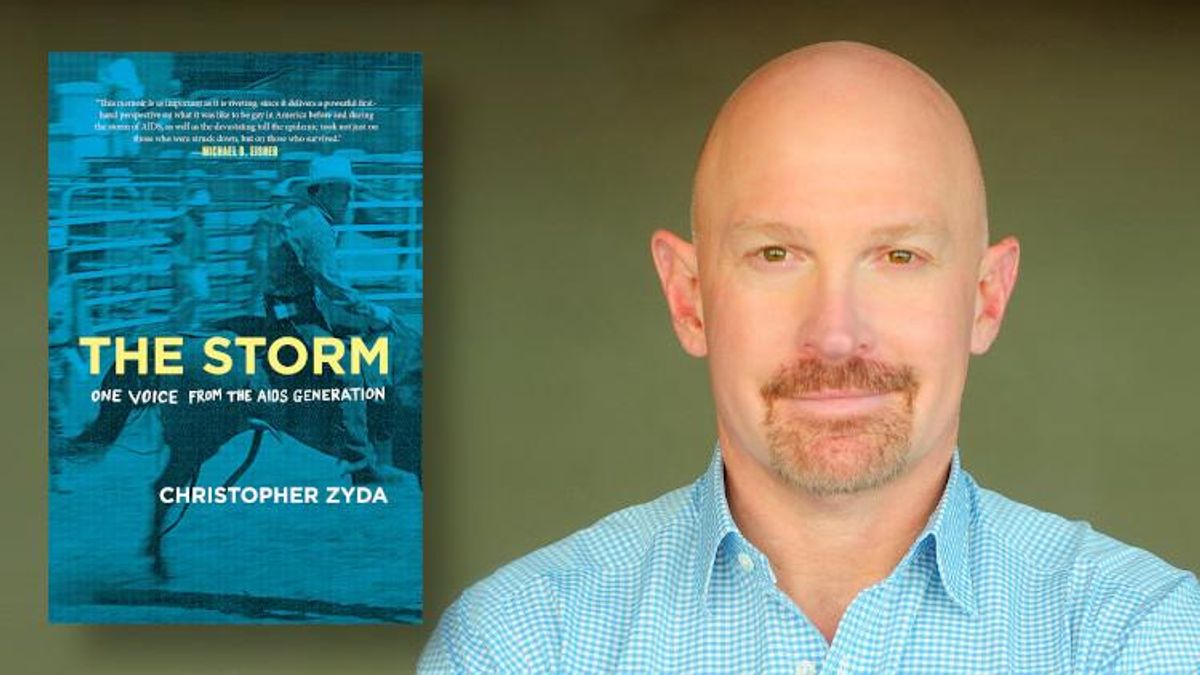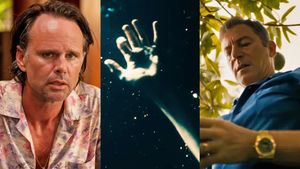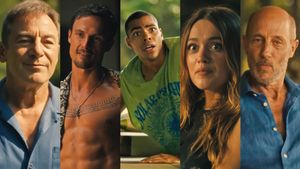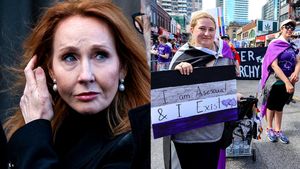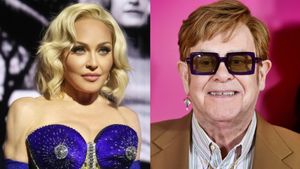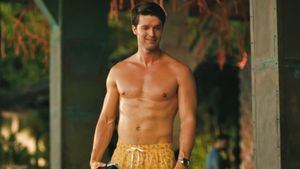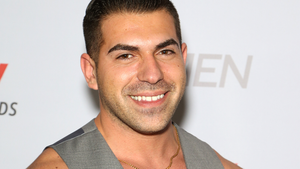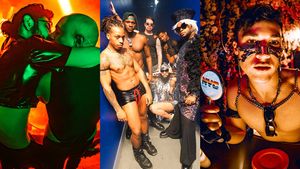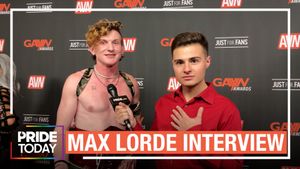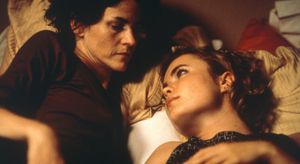I received a postcard from Stephen in early September 1984. He had thoughtfully mailed the postcard inside an envelope so that my parents couldn't read it, since I hadn't yet come out to them. The envelope was postmarked from Southwest Harbor, Maine. The photo on the postcard featured a seagull, alighted on a pier in a Maine fishing village, looking out over the ocean and into a beautiful sunrise in the distance. On the other side of the postcard, he wrote:
"I miss you and I am lonely without you. Please let me see you again.
Stephen."
This postcard touched my heart, and I relented. I missed him too. Stephen and I started dating again after he returned to Los Angeles. With the music of Prince, Tina Turner, the Culture Club, Cyndi Lauper, Madonna, and the Pointer Sisters in the playlist of my life, we discussed how to bridge our differences and stations in life. Stephen compromised, and I compromised.
Actually, Stephen mostly compromised because I insisted that we live primarily at my economic level. Blue Book Society wasn't banned outright, but he accepted that I wouldn't have any part in it. We agreed to try to make our relationship work, together. This completed our bond, and then I fell fully in love with Stephen and I gave him my heart. By the holidays, we were a serious couple, around the same time that voters approved the incorporation of West Hollywood as its own city. Upon its incorporation, West Hollywood made double history by simultaneously electing a majority of openly gay city council members and the country's first openly gay mayor, Valerie Terrigno. Gay Camelot had officially arrived.
Unfortunately, the clouds had arrived, too. The world for me started to go off the rails in December 1984, and it started with Ryan White. In December 1984, Ryan White, a thirteen-year old hemophiliac boy in Kokomo, Indiana, was diagnosed with AIDS after he was exposed to the virus by a contaminated blood treatment. Ryan White instantly changed the discussion in America about AIDS and proved that the mushrooming epidemic would touch everyone--regardless of sex, age, and sexual orientation. You would think that a thirteen-year-old boy who contracted the AIDS virus by accident would have unleashed an outpouring of unconditional love from the largely Christian community in which Ryan White's family lived, but instead the exact opposite happened.
Even though the Center for Disease Control and Prevention had already ruled out the possibility of casual transmission for AIDS in 1983 making quarantines and masks unnecessary, a group of parents in Kokomo opposed Ryan's efforts to attend public school. The ensuing battles and lawsuits, covered extensively in the news media, between his courageous family, that group of Kokomo parents, and the Kokomo school system, highlighted the worst of America's irrational fear of AIDS, the height of human ignorance, and the failure of Christians to respond with love. The White family received death threats from their neighbors. At one point, someone fired a bullet through the living room window of the White family house, which forced them to flee the town and ultimately move away.
Some Christian values!
On a parallel track to Ryan White's heartbreaking saga, by December 1984, AIDS had fully breached the walls of West Hollywood's Camelot. I remember the AIDS virus changing the world so quickly, in an instant. I felt as though a giant black hole opened up and started swallowing people into it. During a time of what should have been youth, optimism, possibilities, and happiness, instead death and dying suddenly surrounded me as friends fell sick and died from the AIDS virus. A surreal and horrifying insanity. It all happened as if someone had flipped a switch to teleport the world into a new reality. The Athletic Club started to post the AIDS obituaries of its members on a bulletin board right next to the gym's front desk. It traumatized me to see this chronicle of death each time I went to the gym. Articles and photos of vibrant young men, whom I knew, who now were dead. A macabre scorecard. But a necessary one, because people were disappearing every day.
This was the devastating backdrop to my growing relationship with Stephen. Although the world had turned upside down, by February 1985, we had fallen madly in love with each other and I moved into his house in Hancock Park on South Arden Boulevard, near Third Street and the Marlborough School for Girls. To commemorate this milestone, I purchased my first piano, an upright made by Tokai, and financed it with an outrageously high-interest rate loan from Household Finance. Since Stephen and I also wore the same size clothes and size 11 shoes, we both instantly doubled our wardrobes, too. Stephen soon left his high-powered law firm job to join California Federal Savings and Loan as a senior counsel to oversee the firm's fledgling mortgage-backed securities efforts, a great new opportunity for him. To save money, I built a writing desk for my new home office out of an unfinished solid door and four 4"x4" posts that I used for legs, all purchased at Anawalt Lumber. I called it "construction chic."
But other than my happiness from moving in and living with Stephen, I remember 1985, the year that I turned twenty-three, as a year full of increasing sadness and devastation. It was a year of sobering firsts as the AIDS crisis mushroomed. The Broadway theater produced the first plays about AIDS: As Is in March, andThe Normal Heartin April. Also in April, the Food and Drug Administration started using the first AIDS test, an ELISA test for IgG antibody to HIV-1, not to diagnose people because of its high false positive test results, but instead to screen the nation's blood supply. AIDS Project Los Angeles held its first AIDS Walk in Los Angeles in July. In August, the AIDS virus made the cover of Time Magazine with the headline, "AIDS: The Growing Threat, What's Being Done." The US Public Health Service had already "recommended" that gay and bisexual men not donate blood since March 1983, but in September 1985, the Food and Drug Administration upgraded that recommendation into a formal lifetime ban.
Also in September, the actress and icon Elizabeth Taylor joined the fight against AIDS, helping establish the American Foundation for AIDS Research (amfAR) along with powerhouse cofounders Mathilde Krim, PhD, Joseph Sonnabend, MD, Michael S. Gottlieb, MD, and Michael Callen. Elizabeth Taylor then became a tireless and lifelong fundraiser for AIDS research and support.
On October 2, 1985, Rock Hudson became the first major celebrity to die from AIDS, having long hidden but finally publicly disclosed his diagnosis only two months earlier. Hudson would be one of many talented people from the world's entertainment and arts communities who would lose their lives in the AIDS epidemic and provide an important and much-needed public face to it. The NBC network broadcast An Early Frost, the first television movie about a man dying from AIDS, in November. My parents watched An Early Frost, and my conservative Roman Catholic mom telephoned me afterward with her review: "He should have never been born."
Gulp.
Also in November, Dionne Warwick released her emotional hit "That's What Friends Are For" to raise money for AIDS research--a truly beautiful song, at the top of the music charts for months, but an unfriendly ghost from the playlist of my life. To this day, I still have trouble listening to it because of the memories that it evokes.
Excerpted fromThe Storm: One Voice from the AIDS Generationby Christopher Zyda. The memoir is available December 8.
